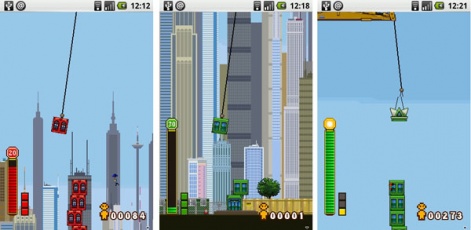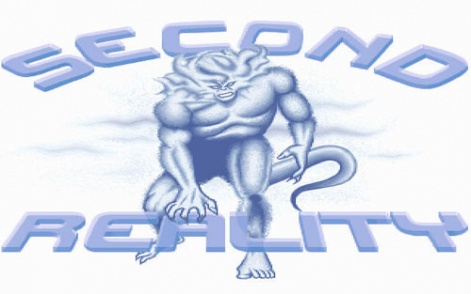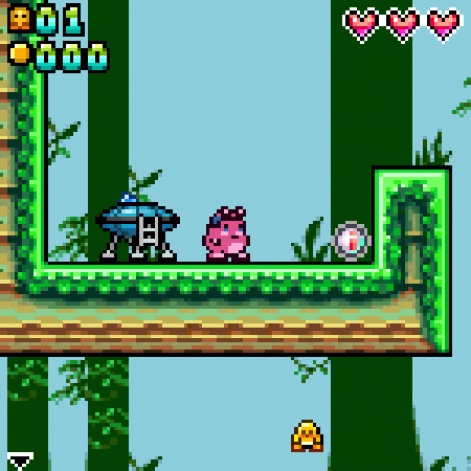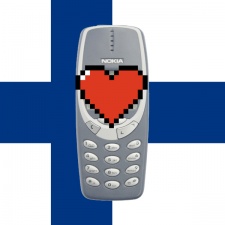In the build up to Pocket Gamer Connects Helsinki 2015 - which runs from 7-8 September 2015: get your tickets here - this week, we're looking back over the history of the Finnish mobile games industry.
You can read the full set here.
If Snake is considered by many to be the blueprint of how to succeed with mobile games in the early years of the mobile gaming industry, then it is fair to say that Finnish companies were the ones who truly understood that.
Within a decade of Snake's launch in 1997, the companies such as Digital Chocolate, Sumea, Mr Goodliving and Riot-E had all emerged as major players in the mobile gaming industry.
But how did they rise up to this position? And what exactly was it about Finland that turned a one off success in the form of Snake into the foundations for an industry that would be worth billions within twenty years.
The answer is that Finland's unique game culture and the influence of Nokia within the broader mobile ecosystem at the time created the perfect combination of open minded developers and global distributor to help spread the success.
Without these factors, the consolidation of the Finnish mobile gaming industry into the early 2000s might never have happened.
Overcoming the hurdles
"If 'discoverability' is the industry's current buzzword, then the buzzword of 2004 was 'distribution'" according to Alex Bubb, Business Development, Games and Ecosystem at Microsoft and previously of Nokia, JamDat and T-Mobile.
And that's definitely true if you look at the broader market conditions that existed in the late 1990s and early 2000s. In comparison to the conditions familiar to mobile consumers today, the western mobile market simply wasn't well suited for dealing with a glut of games.

There was little to no wireless infrastructure in the mobile market as a whole until beyond 2003. Handsets were feature phones relying on buttons and lacking the intuitive input that users are used to with a touchscreen.
And there was little in terms of a consistent standard in the technology within those phones.
Different coding languages like J2ME and BREW emerged in the early 2000s, with different territories favouring different languages, while handset fragmentation led to the emergence of hundreds of different screen sizes, screen colours and hardware to programme for.
Handset fragmentation led to the emergence of hundreds of different screen sizes, screen colours and hardware to programme for.
Therefore, being able to distribute your games to as many platforms as possible became the true challenge for mobile gaming success.
Those companies that could show the necessary creativity to squeeze the most out of the limited capabilities of mobile handsets as well as the marketing nous to get their games embedded into handsets or distributed by operators would find themselves well placed to succeed.
And that was precisely why Finland was well placed to succeed in the mobile environment.
Demoscene: eking the most from devices
From a creative perspective, Finnish game developers had one unique creative advantage over other developers due to the importance of the demoscene to their gaming culture.
Demoscene is a term that describes the rise in the 1980s and into the 1990s of a subcultural developer movement dedicated to producing the highest quality software and games from the low-powered devices on the market.
Starting with the likes of the Amiga and the Commodore 64, the scene evolved into a full movement by the early 1990s with entire parties and conferences dedicated to the pursuit of excellence within limitations.
As a result of that, an entire generation of Finnish developers and talent emerged who took pride in eking as much as was humanly possible out of low-powered devices.
Rather than simply moving on to consoles and developing with the greater power, the demoscene subculture encouraged a broader mind set that allowed developers to see the potential on devices as basic as a scientific calculator.
When mobile gaming emerged, maximising the potential of handsets from a gaming perspective was precisely the sort of challenge that the demoscene developers were perfectly equipped for.
Petri Ikonen, Creative Director of EA Games Finland, told me that the demoscene mentality helped Digital Chocolate to produce fresh and innovative mobile games.
"The spirit at Digital Chocolate was that we're doing something great," he said.
Mobile was the perfect platform for demoscene developers because Java was so limited.Petri Ikonen
"Mobile was the perfect platform for those [demoscene developers] because Java was so limited - 'Ok we have a 64k limit, we can only use 64 bytes etc' So from a programming point of view it was great to have those young guys and how they can do amazing stuff with so little stuff."
The result of that approach was a mentality that turned the limitations of a mobile handset into a commercial equivalent of the old 'how many uses can you find for a paperclip' lateral thinking test.
"What we found out quickly was that controls had to be really simple and that one key phase or idea was one button gameplay" Ikonen said. "For years we were studying whatever mechanics you could create with one button it's amazing."
Fortunately for the Finnish games industry as a whole, this spread of talent who delighted in the challenge of turning something into nothing affected the whole of the Finnish scene.
Remedy Entertainment was forged from the scene, Jaako Iisalo, lead designer of Angry Birds, was another name and Jussi Laakonen, now of Unity, began his marketing career with Future Crew, a legendary demo scene team responsible for influential PC game Second Reality in 1993.
In short, the demoscene was a breeding ground for creativity on a shoestring that sowed the seeds for a developer culture that actively welcomed the challenge of playing hard and fast with the rules of development.

As Suvi Latva of Finnish trade body Neogames comments about the Finnish gaming scene: "We're not burdened by what the industry says you should or shouldn't do."
And that meant that mobile gaming had the necessary creativity to flourish.
Supporting the creative
Yet for all the creative and cultural background of the Finnish scene, that did not outright solve the all-important issue of distribution and reaching out to users beyond the confines of the Finnish borders.
Following the success of Snake on the 6610, Nokia began to integrate games into their handsets as standard.
The solution to that important conundrum fell once again to the patron of the mobile scene in Finland, Nokia, and it was one they performed well.
In truth, Nokia has to be seen throughout its history as a predominantly corporate facing company who saw games as part of the way of achieving their broader aims. Far from intending that as a denigrating remark, this mentality significantly helped the mobile gaming scene in Finland because they found a well-backed global company who were able to support their ambitions without tangibly impacting on their creativity.
Following the success of Snake on the 6610, Nokia began to integrate games into their handsets as standard throughout their mobile golden period.
As new phones like the Nokia 3210,3310 and 3410 set the global industry alight, strong relations with Finnish developers allowed Nokia to serve great games to their consumers and offer stronger footing for companies to go to the operators across the world to secure deals to get their software on devices in return for a small fee.
The pioneer of this approach was Ilkka Paananen in his earlier days at Sumea.
Securing deals to get titles such as Zoy's Rescue Mission and Racing Fever distributed on networks including Vodafone, O2, AT&T, T-Mobile and more across the world, Paananen helped gradually build a profitable mobile focused studio in the early 2000s, to the point it was acquired by Digital Chocolate in 2004.

Their own experience with onboarding games onto handsets and operator portals in turn led to a more secure basis for their own success on mobile.
Whenever Digital Chocolate announced a new title like Johnny Crash, Mafia Wars or Tower Bloxx, operators were willing to feature just about anything from them.
"We were so safe because we had a solid operator base, we created games and knew they'd be taken' Ikonen said, and this business relationship helped secure the future of the companies.
Riot-E managed to secure a staggering €21.5m investment from investors.
The help Nokia provided in these early days was to legitimise Finnish developers and provide them with the stage to show off their skills.
For the most part, such an approach helped to establish Finnish developers at the forefront of developer's minds in the early stages of the industry and their natural demoscene talent helped them to emerge as uniquely gifted players in the market.
Plain sailing for all?
But while some found there were opportunities for them in the increasingly expanding mobile gaming market, many were closed out of the market and relied on external life support to succeed.
The close synthesis of commercial corporate companies running networks and mobile games companies was beneficial to those within, but the limitations of technology, particularly the lack of wireless tech and phone memory shortages (the so called "deck" of a handset) meant that plenty were excluded.
One such example was Relude, the early iteration of Rovio. Founded by Niklas Hed, Jarno Väkeväinen, and Kim Dikert following an Assembly Demo part in 2003, they struggled to make little initial headway with their titles in the early days, forcing them to rely on contract work to keep themselves afloat in the early days.
Perhaps more toxic to the industry than that problem was the effect that Riot-E had on the perception of mobile gaming more broadly. Founded in 1999, before the likes of J2ME arrived in 2001, they managed to pull off one of the most colourful and damaging stories in the early history of the industry.
Riot-E managed to secure a staggering €21.5m investment from investors across the world for their mobile gaming vision. The problem was is that it simply was just a vision: no product existed, the staff stretched to the six people involved in securing investment and there existed no business to speak of.
In the course of two years, the company managed to burn through that investment in admirably wasteful fashion.
Beyond hiring drunks and ex-porn stars off the street to boost staff numbers and hiring Darrell Purviance, an international criminal wanted by the FBI, as their sales director, they splurged millions of euros in the pursuit of dull as ditchwater SMS gaming that proved of little entertainment value to consumers and monetary value to investors.
The likes of Digital Chocolate, Sumea and Mr Goodliving showed there was an opportunity to succeed on mobile in the early days.
Despite securing licenses for X-Men, Lord of the Rings and Bridget Jones' Diary, Riot-E declared bankruptcy in 2002 and took a lot of the goodwill towards mobile gaming with it.
If the likes of Digital Chocolate, Sumea and Mr Goodliving showed there was an opportunity to succeed on mobile in the early days, the hubristic behavior of the Riot-E staff did much to set it back.
Growing pains
Ultimately, the early years of the mobile gaming industry were tough for most companies.
Despite the successes of the few, the majority were left to toil with low quality development tools under the thumb of operators and brands who ruled the roost with low quality ports of Triple A titles.
In comparison to the broadly egalitarian early years of the App Store and Google Play, the early days of mobile gaming were a toil for many.
But it is fair to say that within that toil, the Finnish scene nevertheless laid down the roots of their future success.
Capitalising on the demoscene roots of Finnish developers and leveraging the commercial clout of Nokia, they managed to lay down the foundation stones that would eventually lead to the emergence of the likes of Rovio, Supercell and more.
That's not to say that there weren't some pretty sizeable bumps along the way though…
The third part of our series looks at the Nokia N-Gage and what role it played in the rise of the Finnish mobile gaming industry.






















